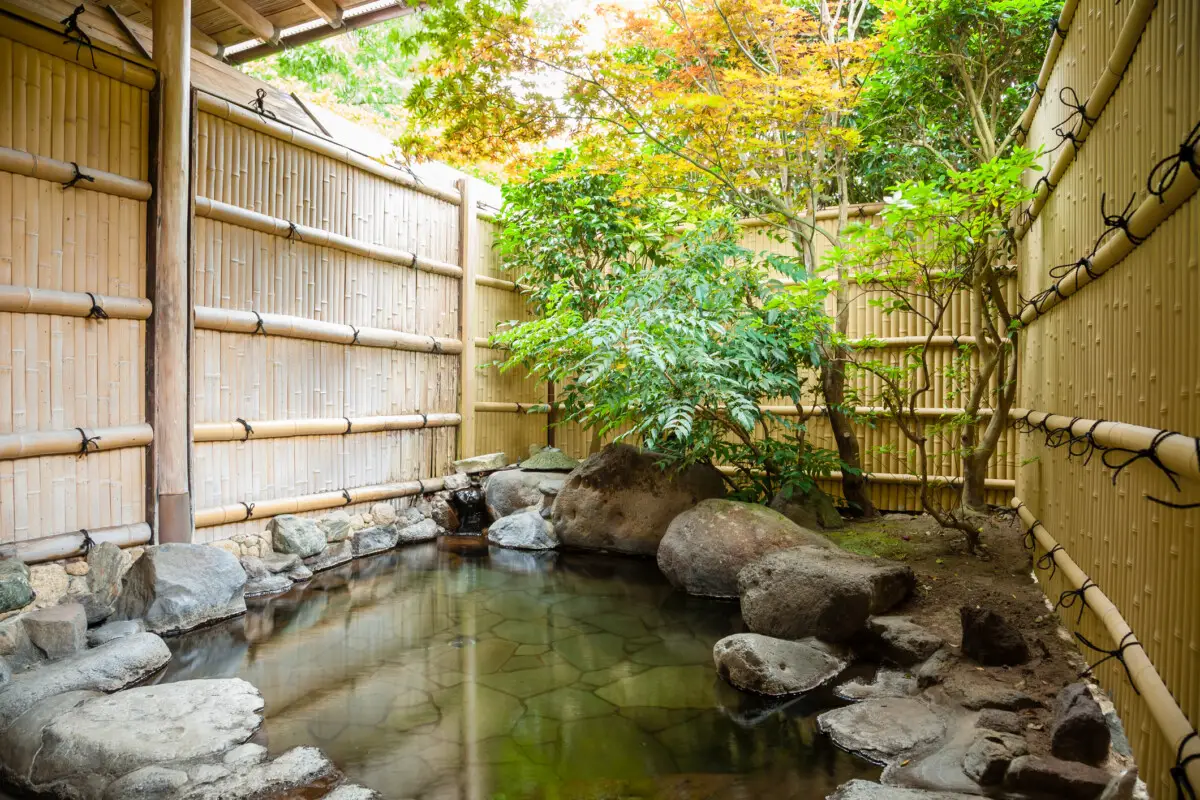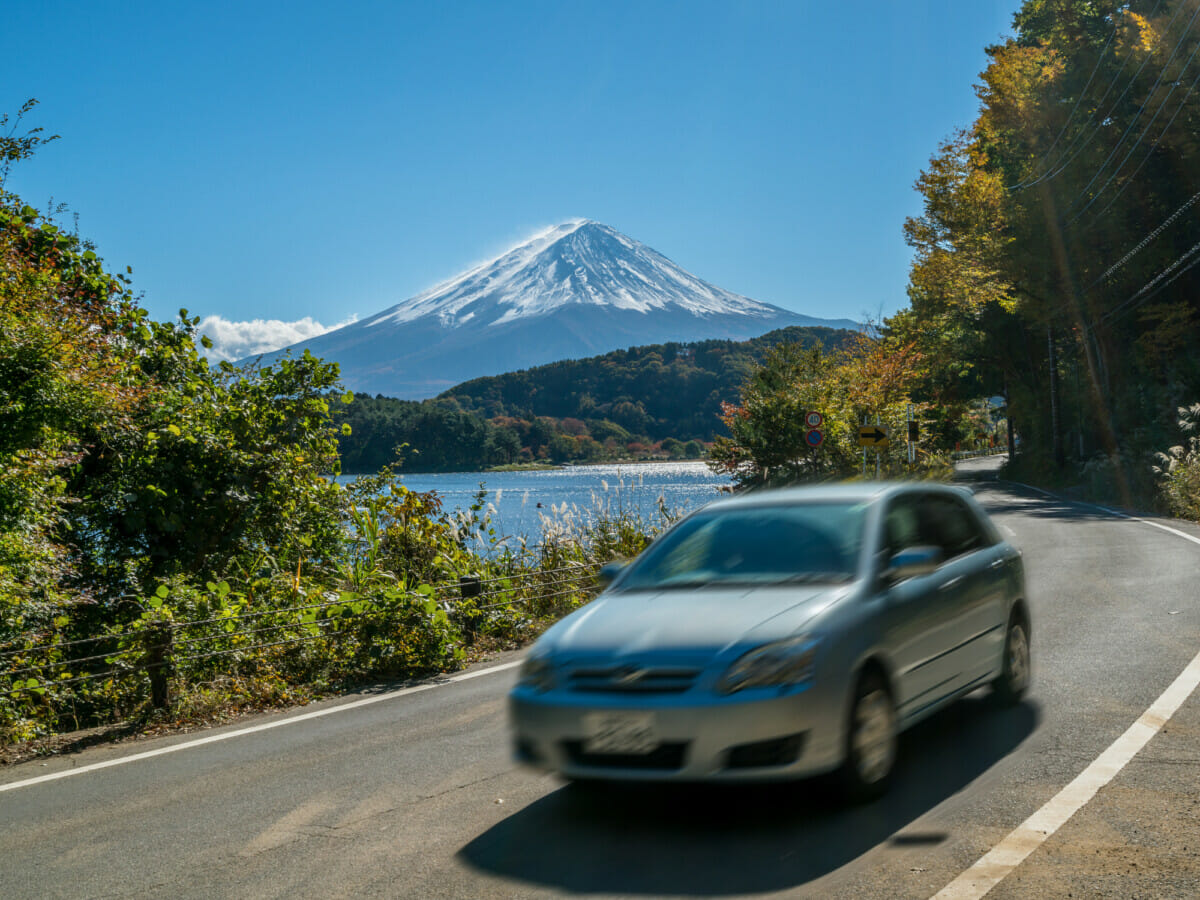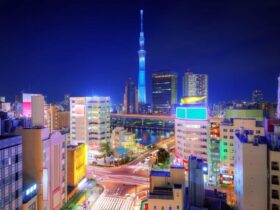The History Of Onsens And Public Baths
An onsen is a bath containing water typically sourced from one of the multiple hot springs in Japan. This water is touted as having relaxing benefits, as well as potential health benefits.
Spending time at an onsen is a social pastime for those in Japan, and it’s an experience deeply embedded in their culture and passed down through generations.
Public baths became a staple in Japan many centuries ago, as most Japanese homes wouldn’t have their baths. A bath was considered a luxury.
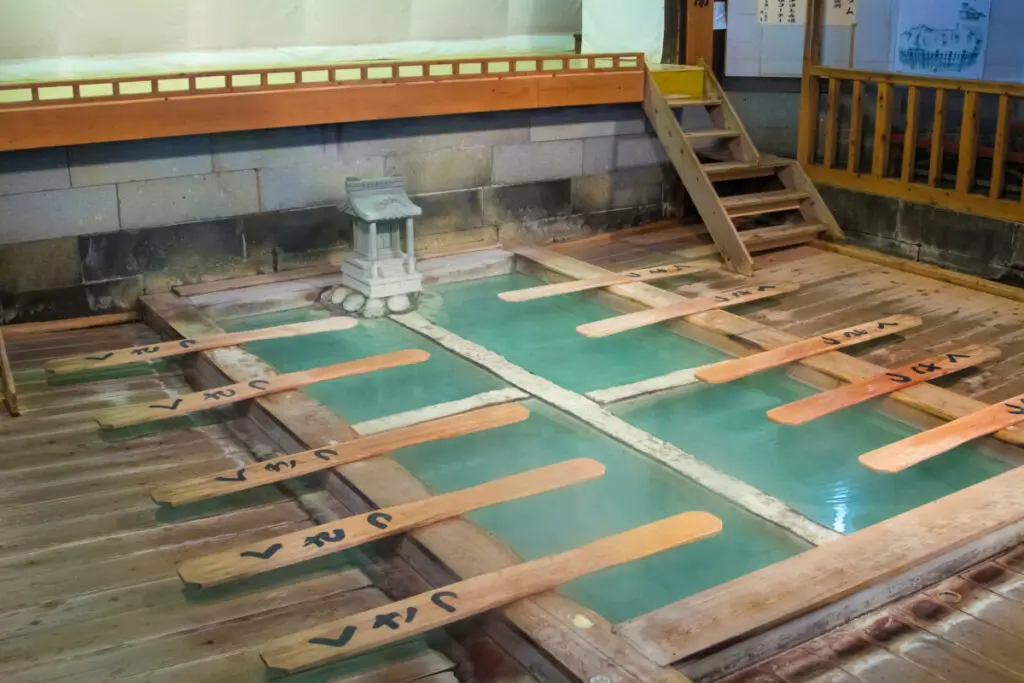
People would come together in these baths to unwind and enjoy the company of others. Even though more modern homes have baths, the social aspect of public baths has remained important to Japanese people even today.
Public Baths In Japan
A bathhouse is known as a sento in Japanese. A sento is a public bath that both locals and tourists can enjoy. These are popular spots, even for people who live in Japan, as it’s a place to relax and chat with others. You can learn a lot by speaking with the locals who are in the sento with you.
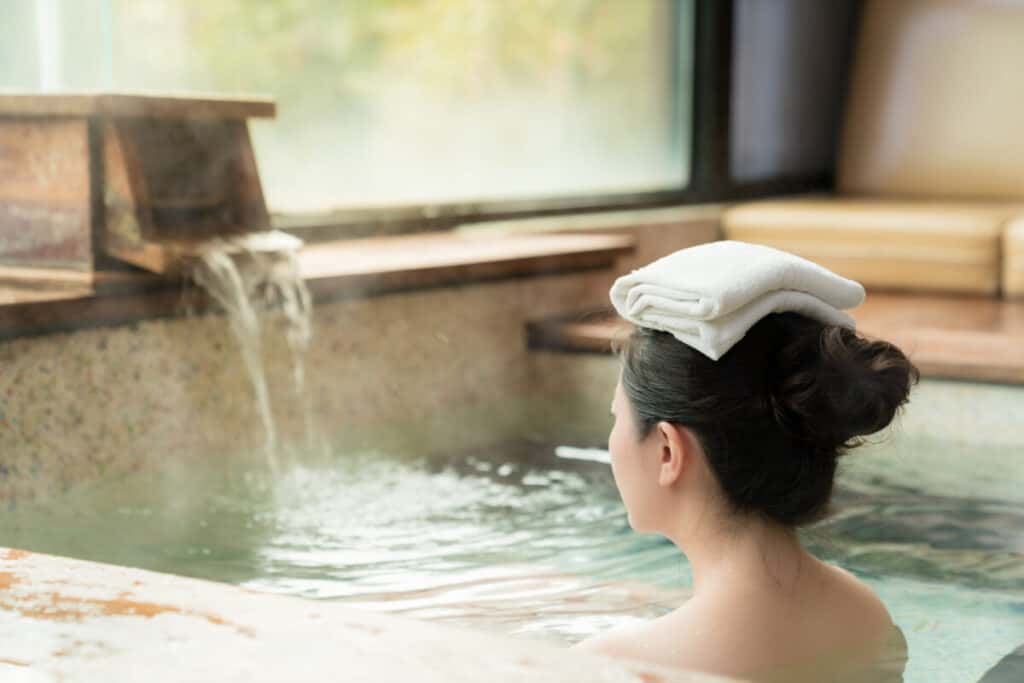
These public baths are usually located indoors, and the baths are separated by gender. There are also dressing rooms in these bathhouses.
Some sentos, known as super sentos, are an entire experience full of ample relaxing activities, including spa treatments, massages, and beauty salons. They are often establishments associated with hotels or restaurants.
Why Baths Are So Popular In Japan
Hot spring water is very warm and is full of naturally occurring minerals; the particular minerals will depend on where the water is sourced from.
The heat can help relieve muscle tension, fatigue, and soreness. It’s the perfect place to relax after a day of sightseeing. The mineral-rich water is also believed to benefit the skin and the spirit.
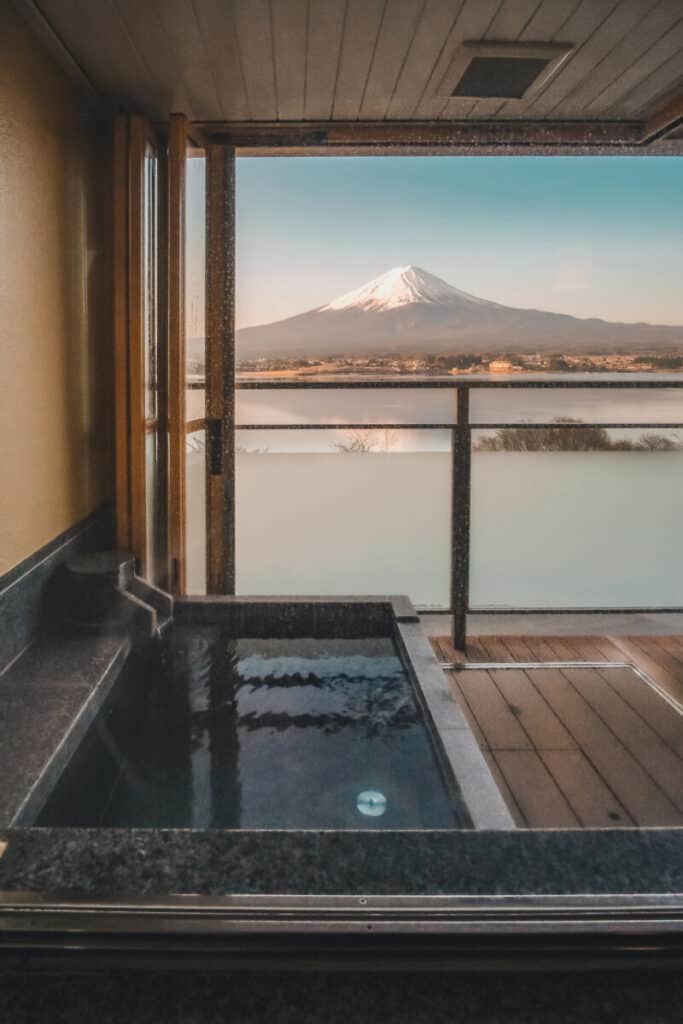
Japan has an abundance of onsens due to the number of volcanoes within the country. Much of the water is sourced from water occurring around these volcanoes.
Onsen towns have been built around some of these areas, with ryokan inns and other tourist attractions nearby.
Some onsen baths may be private and can be enjoyed when staying in the adjoining room. Other onsens, known as rotenburo, are located outdoors, letting you soak in the enriching minerals while looking out at some breathtaking scenery.
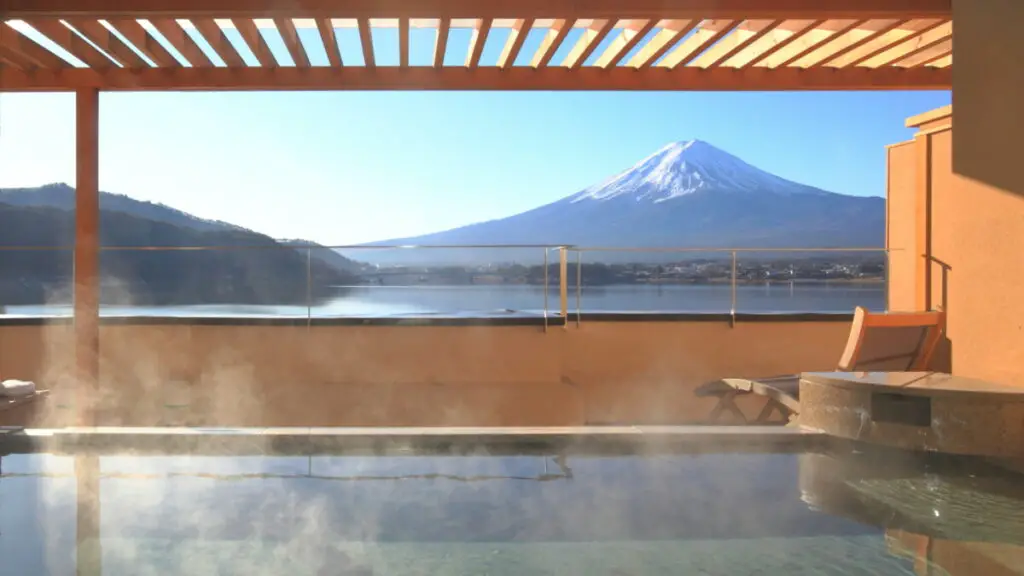
Many of these onsen towns are located outside of Japan’s major cities, making them a great destination to spend a couple of days when you need a vacation from your vacation.
The Misogi Custom
Misogi is an old custom in which one would sit underneath a waterfall to bask in the water. This would allow the person to be cleansed both spiritually and physically.
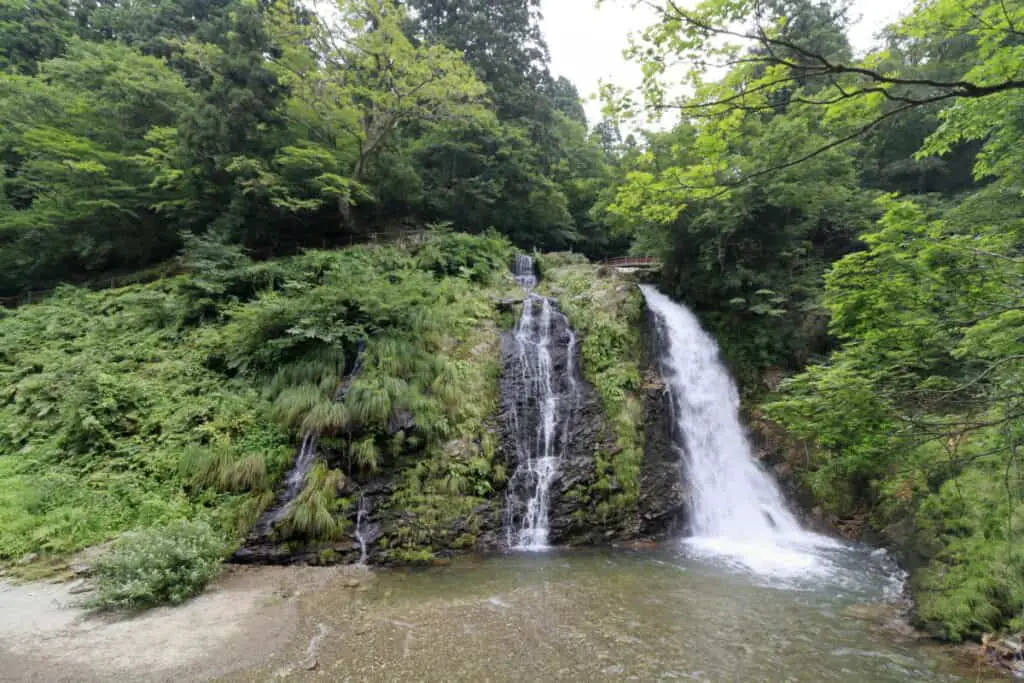
It’s been an important part of Japanese culture for a long time, and it is still practiced in a different capacity at temples and shrines throughout the country.
How Sentos And Onsens Are Meant To Be Used
In Japan, hot spring baths and public baths aren’t meant to be used for hygienic purposes. While you will obviously be clean when coming out of the bath, the purposes of these baths are much more meaningful.
That said, there are rules in place to keep the baths clean and to ensure everyone has a positive experience at an onsen, given that many of them are public and shared.
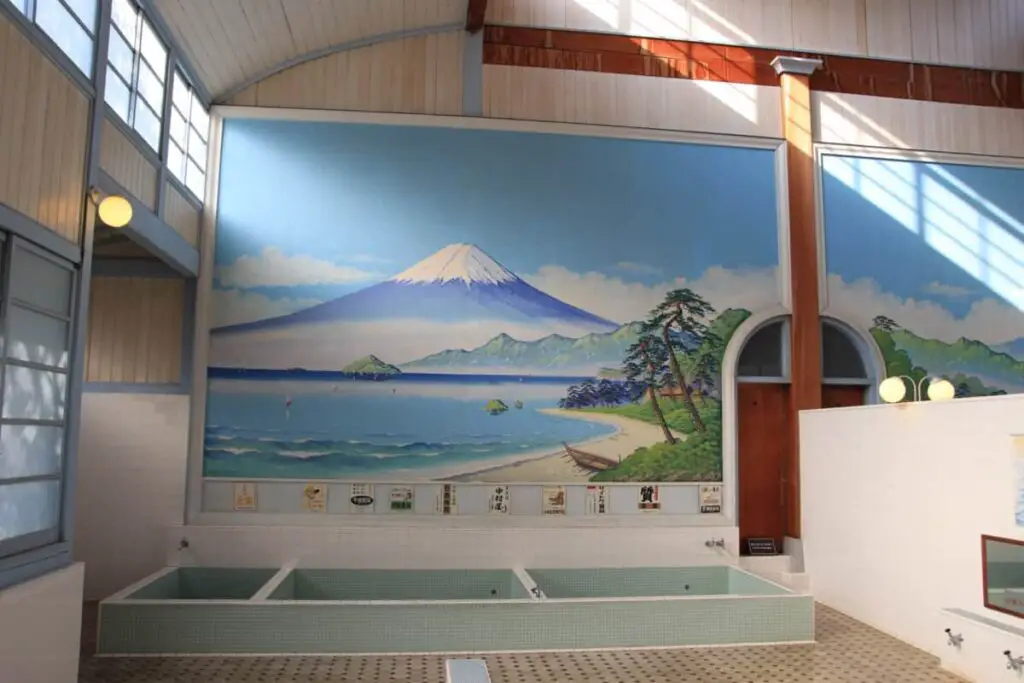
All sentos and onsens are kept meticulously clean, and anyone using one is required to shower before they step into the bath. There are lockers for you to keep your belongings in, as you’re expected to only bring your towel with you when you enter the bath.
Rules Regarding Using Onsens And Sentos
Every bath has its own rules, so you should research where you’re going beforehand. For instance, some public baths do not allow anyone who has tattoos.
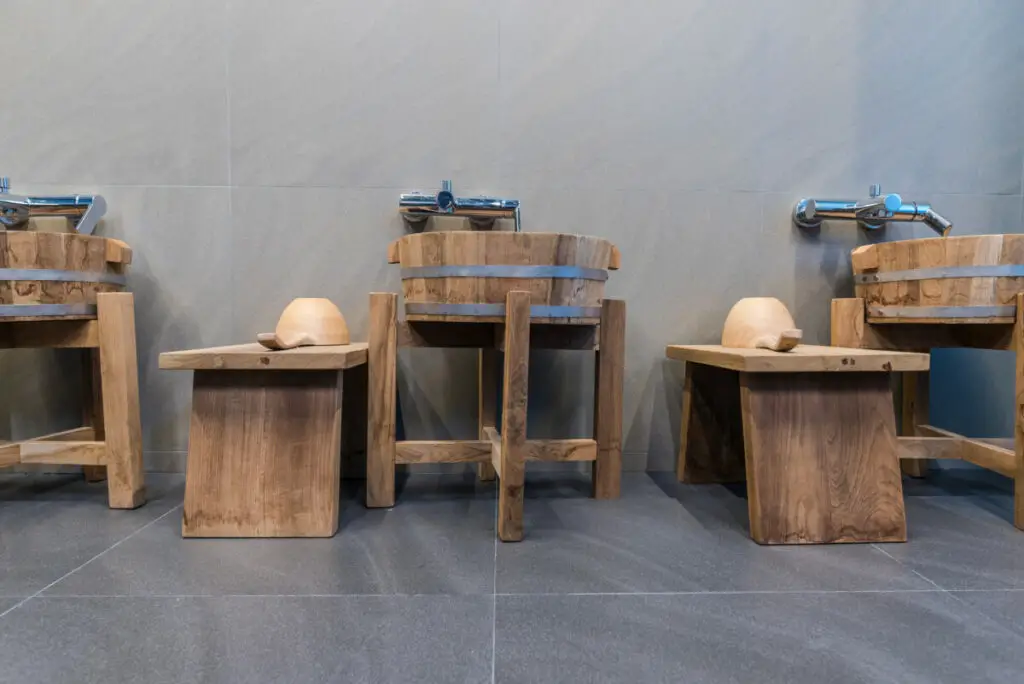
If you can cover them up, you might be safe. If using a private onsen in a hotel, whether or not you have tattoos won’t matter since no one else will see you.
Additionally, if you have a health condition that impacts your heart, lungs, or kidneys, you should talk to your doctor before using a public bath.
If you’re actively sick, you’re also asked to avoid baths until you’re better. If you have consumed alcohol recently, it could be unsafe for you to use the baths.
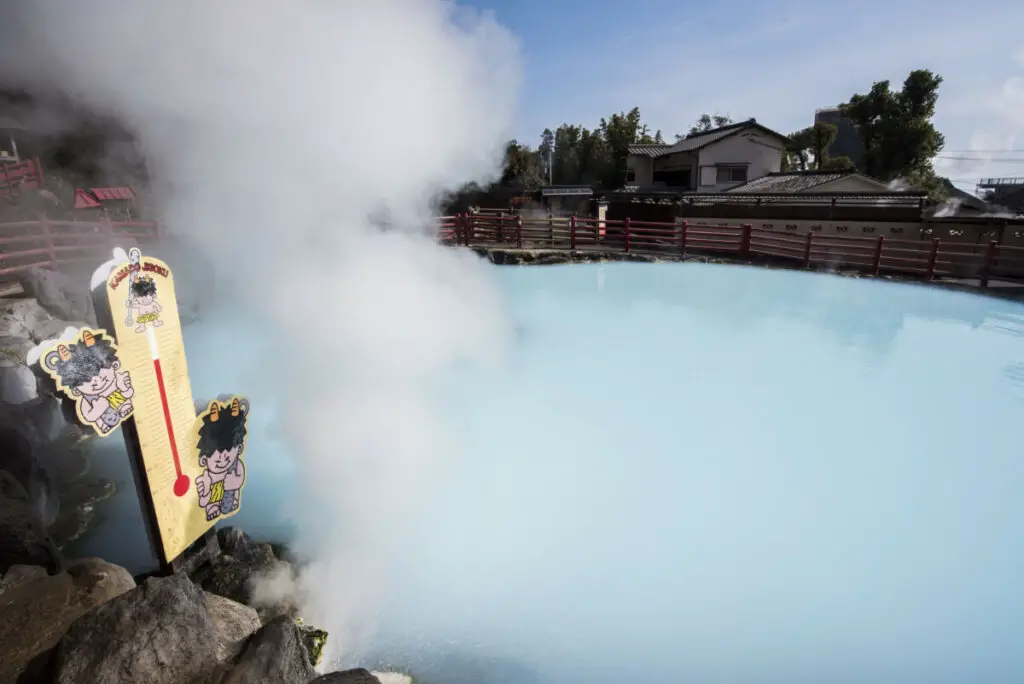
You are also asked to avoid baths if you have open sores, cuts, or fresh wounds. If you’re menstruating, you’re also asked to stay out of the baths. You should also remove makeup before entering the bath to avoid getting it in the water.
What You Need To Bring To Experience Public Baths
Whether visiting a hot spring bath or a public bath, there are a few things you are asked to bring with you. Some onsens and sentos will have some amenities that you can rent or purchase, but some don’t.
You’re asked to bring a small towel for use in the bath and a large towel to dry off when you exit the bath. You should also bring toiletries to wash before getting into the bath. If you have long hair, you’ll be asked to tie it up.
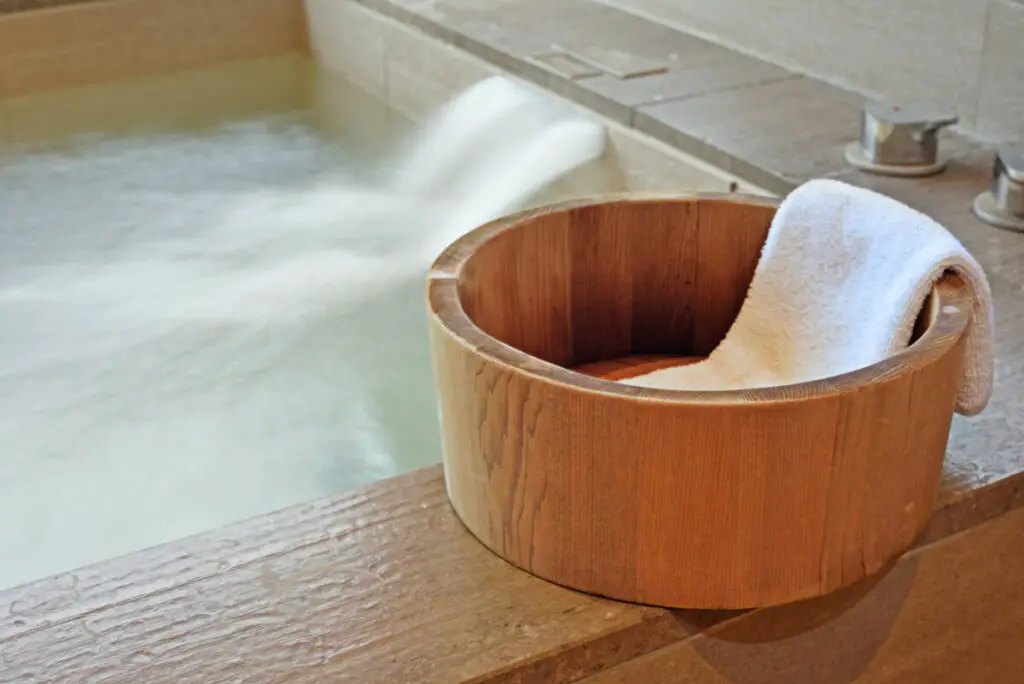
Dressing rooms will usually have baskets to place your towel in when you remove it before stepping into the bath. The basket can be taken with you to the bath.
What To Wear In A Public Bath
The majority of hot spring baths and public baths are meant to be enjoyed nude. While this might make you nervous, rest assured that those who visit these baths aren’t there to be nosy. Furthermore, once you’re in the bath, no one can see anything.
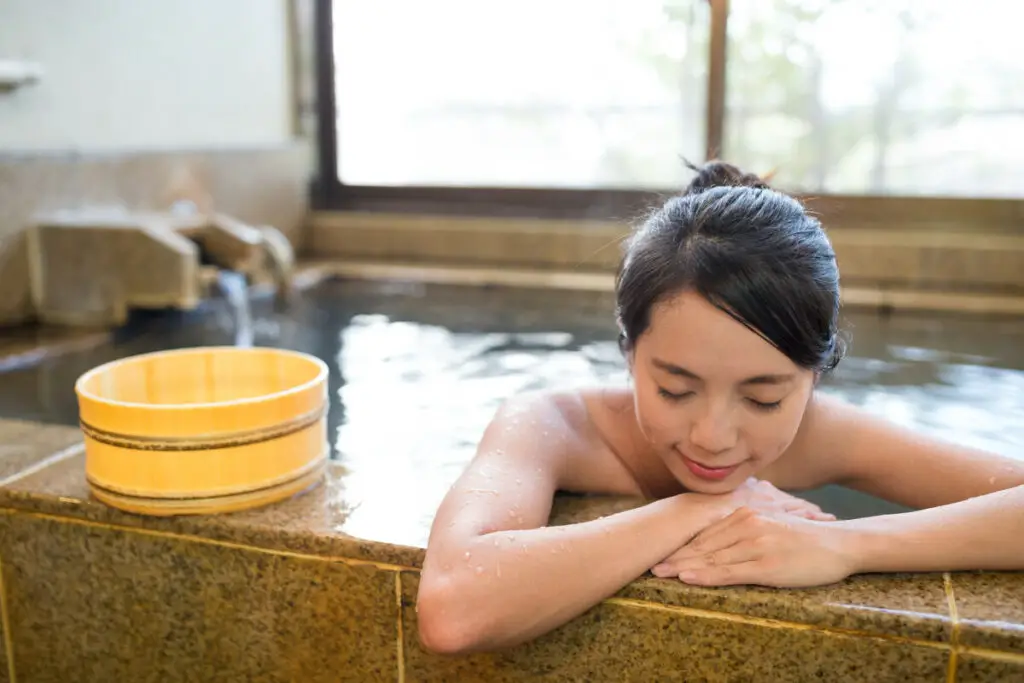
Some baths will let you wear a swimsuit, so be sure to check ahead of time if you would feel more comfortable at a bath that allows swimwear. You’re also asked to wear no shoes or sandals when in the facility.
There are some ryokans that have private baths that you can enjoy all by yourself if you’re concerned about enjoying them properly without other people around.
Proper Etiquette When Visiting Baths In Japan
There is proper etiquette you’ll be expected to follow when visiting a public bath. Of course, you’re asked not to stare at people. If you’re there with children, be sure everyone walks very carefully to avoid any slipping or falling.
You should also shower in the facilities before getting into the bath to ensure you’re not bringing any contaminants into the bath water. There are chairs you can sit on, and you’re asked to clean them once you’re ready to leave.
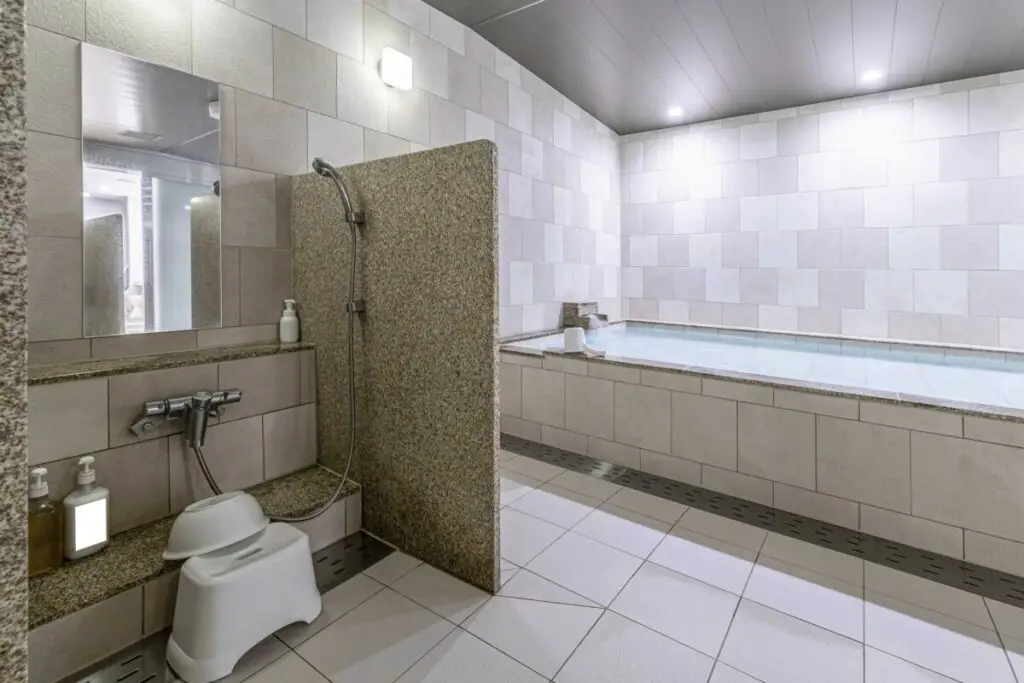
You’re allowed to walk out with your dry towel wrapped around you if it makes you comfortable, but you’re asked not to let the towel touch the water at all.
You are also asked to dry off with your towel when you exit the bath, so you don’t drip water all over the floor and create a safety hazard.
Tips To Enjoy Your Japanese Bath Experience
It’s important to remember that these public baths, sentos, or onsens aren’t swimming pools. You’re expected to either sit or stand in these baths and nothing else.
Playing around in the water could disturb other patrons who are trying to relax and unwind.
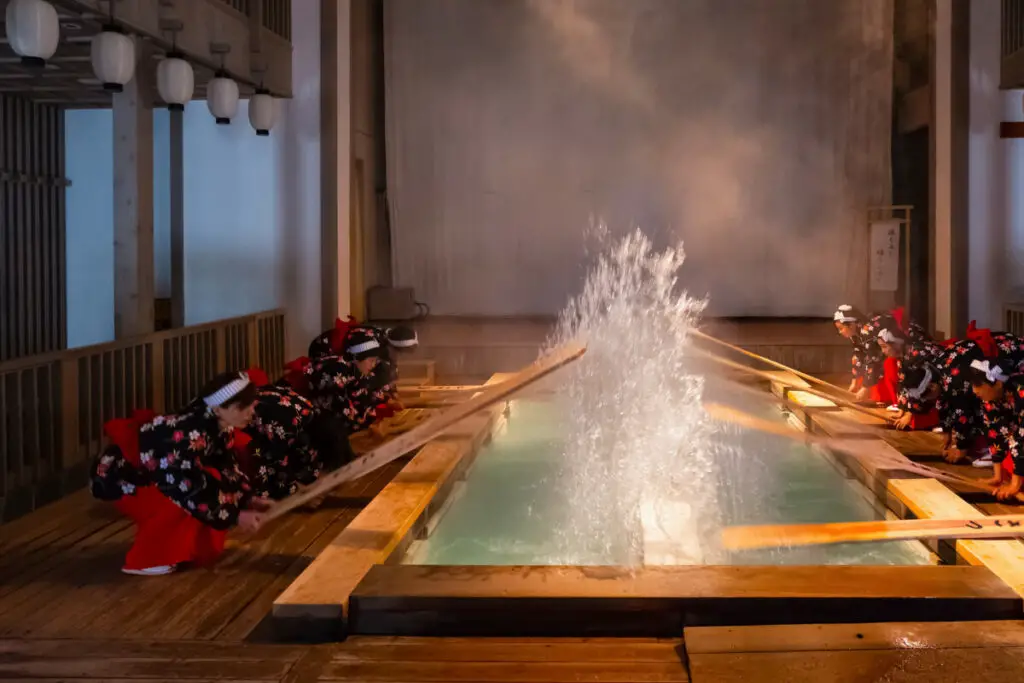
You should also take your time when entering the water, as it’s typically very hot. The temperature can take a moment to get used to.
Where To Find Onsens And Sentos
There are hundreds of onsens, sentos, and public baths throughout Japan. There are some onsens and onsen towns that are famous around Japan and the rest of the world.
Hakone and Beppu are two hot spring districts that offer unique bathing experiences, as well as delicious food and hospitable accommodations.
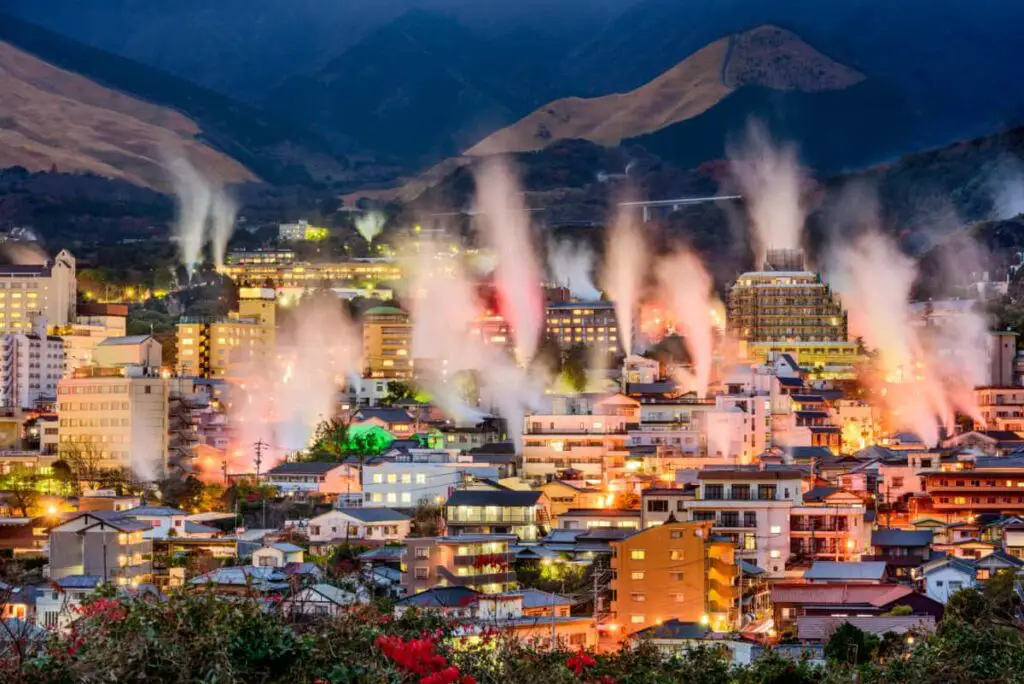
Regardless of what brings you to Japan, there’s a good chance you’ll find a place to enjoy a traditional Japanese bath close to where you’re staying.
It’s the epitome of relaxation in Japan, and you can learn a lot about the culture and the area you’re in by speaking with other patrons in public baths.
Best Public Baths In Tokyo Via Tripadvisor
People often go to public baths to socialize, so you don’t have to be concerned that you’ll be bothering others if you chat with them. Many locals who go to public baths will often start a conversation with you if they can tell you’re not from Japan.

